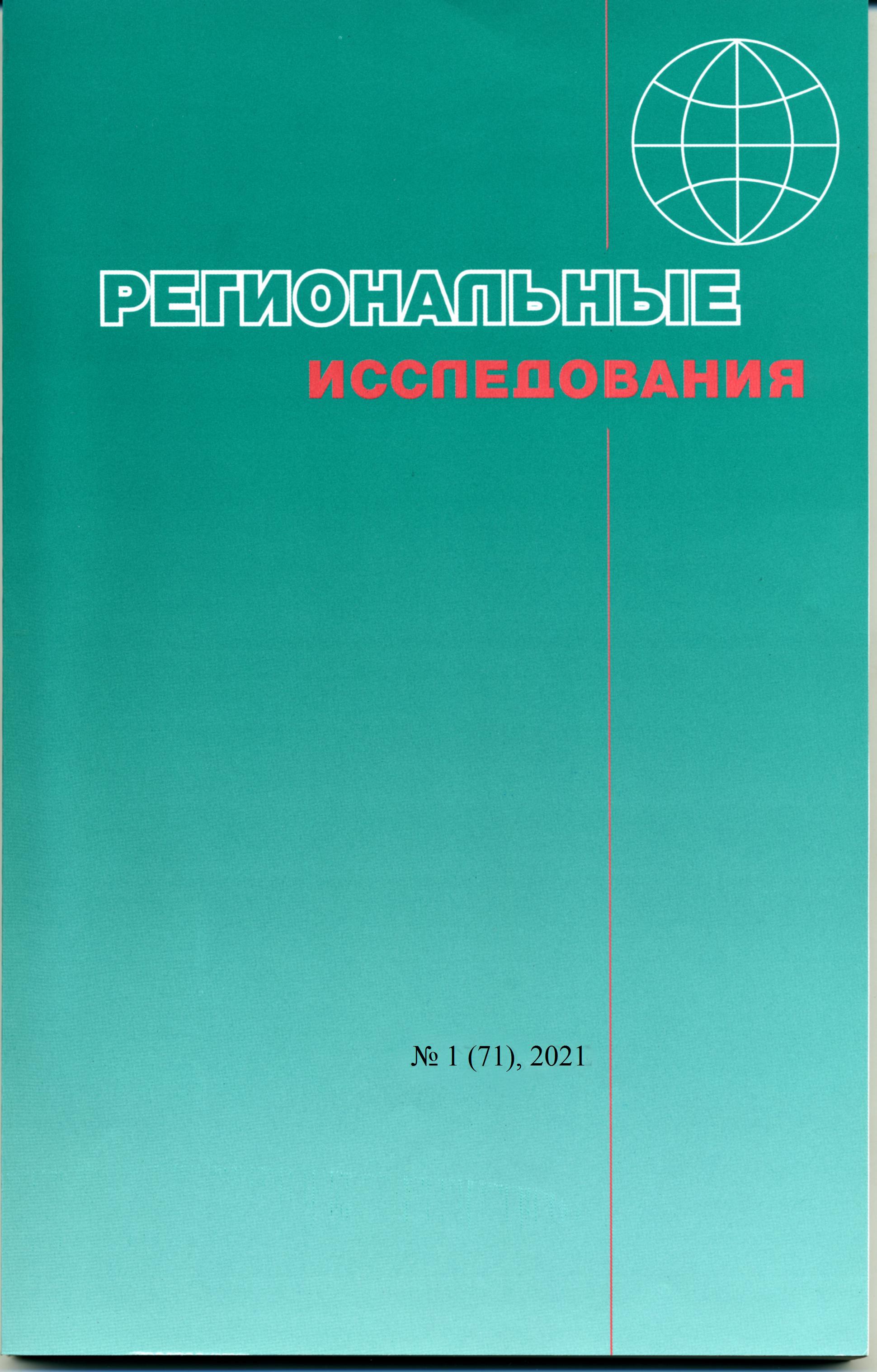Yashunsky A.D. On social permeability of municipal borders
DOI:
https://doi.org/10.5922/1994-5280-2021-1-3Keywords:
municipalities, border, interregional interaction, social networks, social proximity, neighborhood, border permeability, insularityAbstract
The article investigates the intensity of social interaction between the population of different municipalities in Russian Federation. This interaction is estimated using user profile data from online social networks: a data source that grows more and more popular in population geography studies. We build a qualitative indicator of social interaction using data on the number of interregional friendship links for «VKontakte» social network users that live in different municipalities and have an open social network profile. We show that the intensity of social interaction is higher on the average for municipalities that share a common border. Social interaction intensity data is then used to characterize the permeability of municipality borders. We choose the least permeable borders among all border segments of municipalities in Russian Federation: those with the smallest transborder interaction intensity values and describe the social barriers that are revealed this way. We describe various configurations of these barriers and suggest hypotheses for the reasons why such barriers appear or do not appear. We also analyze several groups of socially insular groups of municipalities in the Khanty- Mansi Autonomous Okrug and the Yamalo-Nenets Autonomous Okrug and suggest possible reasons for their insularity.
Thanks
The author expresses gratitude to V.D. Yashunsky for his help in data processing.
References
Васильева О.Е., Удовенко В.С. Социально-географический анализ сельских поселений на основе данных социальной сети «ВКонтакте» // Вестн. Моск. ун-та. Сер. 5. Геогр. 2018. № 6. С. 26–33.
Забокрицкая Л.Д., Хлебников Н.А., Орешкина Т.А., Комоцкий Е.И. Возможности изучения ценностей молодежи через профиль социальной сети «ВКонтакте» // Мониторинг обществ.мнения: экон. и соц. перемены. 2020. № 2 (156). С. 148–167. DOI: 10.14515/monitoring.2020.2.692.
Замятина Н.Ю., Пилясов А.Н. Концепция близости: зарубежный опыт и перспективы применения в России // Изв. РАН. Сер.геогр. 2017. № 3. С. 8–21. DOI: 10.7868/S037324441703001X.
Замятина Н.Ю., Яшунский А.Д. Миграции с Севера: социальные сети и ментальная «близость» // Внеэкономические факторы пространственного развития. Сб. статей / Отв. ред. В.Н. Стрелецкий. М.: Эслан, 2015. С. 147–173.
Замятина Н.Ю., Яшунский А.Д. Виртуальная география виртуального населения // Мониторинг обществ.мнения: экон. и соц. перемены. 2018. № 1 (143). С. 117–137.
Ивлиева О.Д., Яшунский А.Д. О расстояниях, которых не знает дружба // Городские исследования и практики. 2019. Т. 4. № 1. С. 64–76. DOI: 10.17323/usp41201964-76.
Смирнов А.В. Факторы миграции населения городов и районов российской Арктики // Миграционные мосты в Евразии: новые подходы к формированию миграционной политики в интересах устойчивого развития. Мат-лы XI Междунар. науч.-практ. форума (Москва, 5–6 декабря 2019 г.) / Под ред. С.В. Рязанцева, М.Н. Храмовой. М.: Изд-во «ЭконИнформ», 2020. С. 263–272.
Смирнов И.П., Виноградов Д.М., Алексеев А.И. К Москве или к Санкт-Петербургу? Тяготение населения Тверской области по данным сети «ВКонтакте» // Изв. РГО. 2019. Т. 151. № 6. C. 69– 80. DOI: 10.31857/S0869-6071151669-80.
Смирнов И.П., Смирнова А.А. Активность населения как ресурс развития городов Тверской области: опыт оценки по данным сети «ВКонтакте» // Вестн. Тверск. гос. ун-та. Сер.: Экономика и управление. 2019. № 4. С. 108–116.
Смирнягин Л.В. Трансформация общественного пространства России // Отечественные записки. 2007. № 1. С. 35–48.
Audretsch B. Agglomeration and the location of innovative activity // Oxford review of economic policy. OxfordUniv. Press, 1998. P. 18–29.
Llano C., de la Mata T. Modeling the Effect of Social-Network on Interregional Trade of Services: How Sensitive Are the Results to Alternative Measures of Social Linkages. In: Spatial Econometric Interaction Modelling. Advances in Spatial Science (The Regional Science Series). Patuelli R., Arbia G., eds. Springer, Cham. 2016. P. 365–414. DOI: 10.1007/978-3-319-30196-9_15.
Shishaev M., Fedorov A., Datyev I. Analysis of Online Social Networking When Studying the Identities of Local Communities. In: Digitalisation and Human Security. New Security Challenges / Salminen M., Zojer G., Hossain K., eds. PalgraveMacmillan, Cham. 2020. P. 267–293. DOI: 10.1007/978-3-030- 48070-7_10.
Torre A., Rallet A. Proximity and localization // Reg. Stud. 2005. № 39. P. 47–59.
Zamyatina N., Goncharov R., Poturaeva A., Pelyasov A. The sandwich of Russian space: How different spaces differentiate themes in regional science // Reg. Sci. PolicyPract. 2020. P. 1–19. DOI: 10.1111/rsp3.12272.
Интенсивность дружбы регионов // Интерактивный атлас «Виртуальное население России». 2017. [Электр. ресурс] URL: http://webcensus.ru/vmap/интенсивность-дружбы-регионов/ (дата обращения: 20.11.2020).
Интерактивный атлас «Виртуальное население России». 2017. [Электр. ресурс] URL: http:// webcensus.ru (дата обращения: 20.11.2020).

